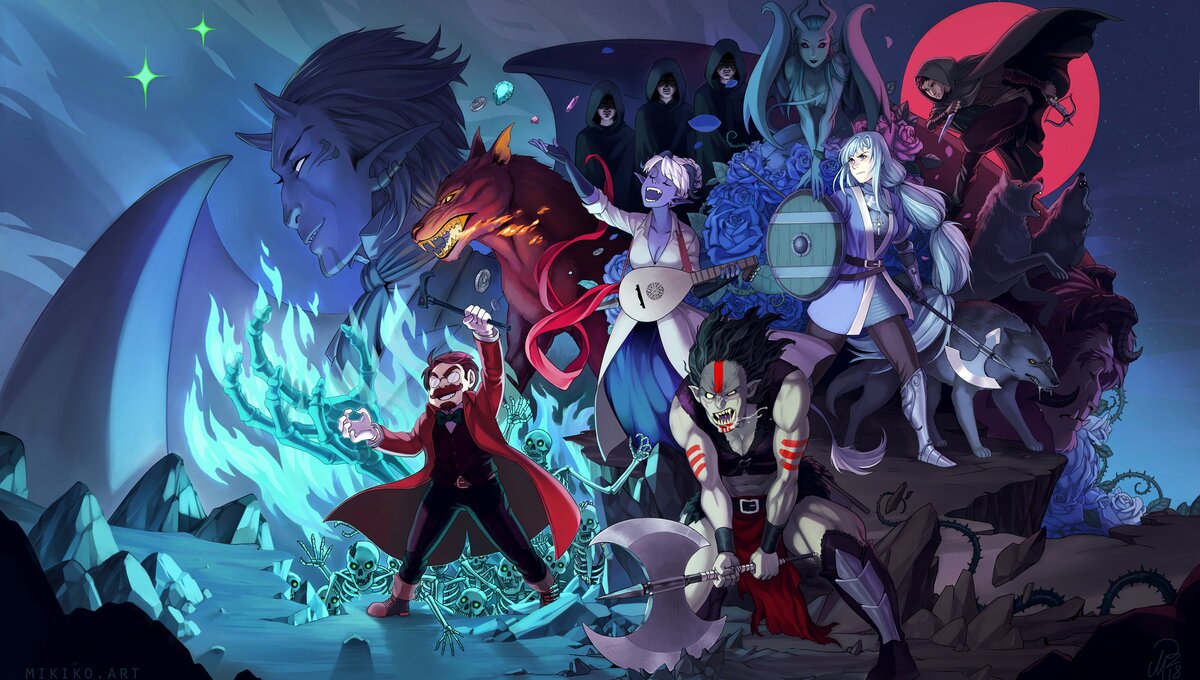Internationally established artists have discovered the art ot Japanese Manga for themselves, but what does their everyday life look like? What kind of dreams are they following and what difficulties did they have to face?
An article series by the German online magazine Sumikai will give you some insight into the life of various international and Japanese mangaka.
We started with the Chinese illustrator Shilin Huang, who lives in Toronto. Next, we will talk about the German-Japanese illustrator Mikiko Ponczeck, who is known on the Internet as her penname Zombiesmile.
German comic award winner and talented linguist Mikiko was born in Tokyo on February 2nd, 1984. As a child she moved a lot because of her father's job, leading her to become fluent in German, English, Japanese and French. In 1999 she moved to Germany and graduated from high school there.
In 2007, Mikiko made her debut as a mangaka with Lost and Found at the publisher The Wild Side. At The Wild Side, she also worked for several years as Art Director. She also translated various works into German and was responsible for the letterings. In 2010, Mikiko's first collaboration with Tokyopop Deutschland took place through her contribution in Grimms Manga Sonderband. In the same year, a new edition of Lost and Found and its artbook Blue was published by the same publisher. Further collaborations followed including the Australian publisher Gestalt Publishing, the restaurant chain Subway, the German association Animexx and the publisher Fireangels.
In her twelve-year career, Mikiko has won the AnimaniA Award's (an annual award from a German anime/manga magazine) Best National Manga for Grimms Manga Sonderband and the Audience Award of the Max & Moritz Prize (an annual German comic award awarded at the Comic Salon in Erlangen) for Crash 'n' Burn. Her more recent works, Scars and Miki's Mini Comics were both published by the German publisher Pyramond.
Mikiko grew up with manga and anime, so it was something that always accompanied her in her life. Her mother was an artist, so she copied drawing from her, but it was never really strict manga drawing. Thanks to reading a shonen manga for the first time at the age of twelve, Mikiko had the feeling that she had finally found something she always wanted to do: manga drawing. After that she worked on it continuously and just couldn't stop. Mikiko confesses that her family initially thought it was just a phase. Her father wasn't convinced of her plan at first, but little by little they realized that it made Mikiko happy.
"When the first real jobs came, they knew that I wouldn't starve, and today they are my biggest fans."
Mikiko describes her beginnings as very spongy. Before graduating from high school, she had tried to find out how she could become a mangaka, but all the job counseling was completely useless. She was told to become an art teacher or a goldsmith. It didn't occur to anyone to suggest the option of 'freelancers' to her. Because of this she drew manga after graduating from high school, uploaded it online and tried to apply to art schools, but was rejected.
"I ended up with a doijin at a small publisher and started going to conventions. At that time people drew everything for free and I started to charge money for ConHon entries. That was quite controversial ... until suddenly everyone wanted money for them."
Over the years Mikiko expanded her online fan base and published several titles with Tokyopop Germany and other publishers. Currently she produces almost everything by herself. In German-speaking countries it is not uncommon for there to mostly be no publisher behind a German mangaka's published works.
What does the present look like? The digital age has also arrived in Germany. Mikiko says that her job situation has absolutely improved, as everything is handled online, where Germany was lagging behind at the beginning. She always had social media channels in English, so her fanbase was international. Even 90% of her orders come from abroad.
"Of course, over time my reach has become so great that it is hardly any effort to find work. Websites like Patreon, Tapas, ko-fi help with fan service and extras. Online shop platforms where you can sell pints and books are abundant today. It's getting better and better, I can't complain."
But how does Mikiko's working week look like at the moment? This varies depending on the job. However, she focuses on trade fairs, as the sale of many comics, art books and merchandise is planned there. In general, her day starts in the morning with processing emails and invoices. Then Mikiko draws the rest of the day until 6:00 pm. On weekends, however, the work computer is taboo for her. Mikiko's private life is always very much connected with her work, because she loves drawing. Her activity cannot be separated from her as a person. However, for a good reason, she strictly divided up her working hours.
"Saying 'no' is something I had to learn. But today it's not a problem and I avoid stress that way. I don't miss anything, because sitting and drawing at home is my idea of a wonderful day!"
Last but not least, Mikiko confesses that she is quite satisfied and enjoys life at the moment. Surprising things always come up, but she likes to let them come up to her. For the future, however, the artist has set one thing as a goal.
"The goal was to make a living from my work. Today it's more: 'I want to finally finish this old project' or something like that. The current goal is simply to finish everything that has been left behind."
Find out more about Mikiko Ponczeck at her official website, Twitter, Instagram and Patreon.

